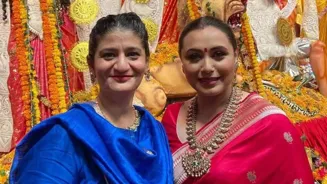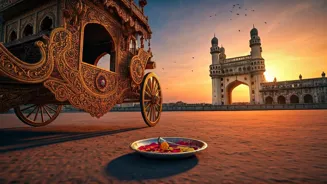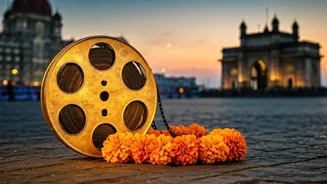While the movement officially ended in 1945, it still marches on in memory - thanks, in no small part, to the power of cinema.
We are not saying that you
should watch a film to understand the Quit India Movement. Yes, it has become trendy these days to learn history through cinema, but that’s not quite the way, because films offer a dramatized version, not a history lesson. What they do capture, though, are the emotions that defined those times. And so, if you want to get a sense of what the Quit India Movement felt like (the pulse of the people or the intensity in the air), maybe you can watch a film.
The movement, launched on this very day, August 8, in 1942, was a massive phenomenon, which, according to Viceroy Linlithgow, was the “most serious uprising against the British since 1857.” It literally rattled the Empire. And naturally, such a turning point in our history has been captured on the big screen time and again.
Today, as we mark 83 years of that powerful call for independence, let’s revisit some of the most impactful films that brought the spirit of Quit India to life.
Gandhi (1982, Dir. Richard Attenborough)
Richard Attenborough’s 1982 magnum opus 'Gandhi' is inarguably the most ambitious cinematic portrayal of India’s freedom struggle, and the Quit India Movement forms one of its emotional and narrative peaks. Ben Kingsley’s Gandhi addresses a swelling crowd at Bombay’s Gowalia Tank Maidan (now August Kranti Maidan), with his electrifying words: “We shall either free India or die in the attempt.”
More than just a turning point in the film, this marked a shift in global understanding of India's fight against colonial rule. Attenborough choreographed the scenes of mass arrests and state brutality with documentary-like precision, employing over 300,000 extras to recreate the scope of the unrest. The movement’s lack of central leadership after Gandhi’s arrest is also depicted, emphasizing the spontaneous, leaderless fury that followed.

Though praised for its scale and Oscar-winning performances, the film has drawn criticism for softening the edges of colonial violence. Some Indian critics pointed out that its Western gaze occasionally diluted the rawness of India’s pain. Still, for millions worldwide, 'Gandhi' made the 1942 uprising a cinematic milestone.
1942: A Love Story (1994, Dir. Vidhu Vinod Chopra)
If 'Gandhi' offered the wide-angle view, '1942: A Love Story' zoomed in on how revolution seeped into everyday life. Vidhu Vinod Chopra’s romantic drama, set in a fictional hill station, follows Naren (Anil Kapoor), a privileged youth transformed by love and political awakening. The Quit India Movement simmers in the background and then erupts into his life.
The film doesn’t pretend to be a documentary. Rather, it uses personal stories to explore political change. One of its most memorable sequences juxtaposes a romantic ballad with a violent protest breaking out nearby. The implication is that in 1942, no space (no matter how idyllic) was untouched by the storm.
(1994) Director Vidhu Vinod Chopra and Anil Kapoor during the shoot of '1942 A Love Story'. pic.twitter.com/nfpuua283i
— Film History Pics (@FilmHistoryPic) June 12, 2018
(@FilmHistoryPics/X)
Manisha Koirala’s Rajjo and Jackie Shroff’s revolutionary leader lend emotional weight to the story. While the plot takes liberties, the backdrop remains grounded in the real fear and hope that swept through small towns and big cities alike. Chopra, in interviews, described the film as a tribute to the dual forces of love and sacrifice.
(Credit: Vidhu Vinod Chopra Films)
It may not be historically meticulous, but '1942: A Love Story' captures how the personal and political collided in that fateful year.
Sardar (1993, Dir. Ketan Mehta)
Ketan Mehta’s 'Sardar' offers a more deliberate account of the Quit India Movement through the eyes of one of its most strategic minds, Sardar Vallabhbhai Patel. Portrayed by Paresh Rawal with steely resolve, Patel is shown initially skeptical of Gandhi’s non-violent method, but soon joins in organizing civil disobedience with military-like precision. The film’s most powerful moments come not from speeches, but from action. One such scene shows Patel confronting British officers while urging peaceful resistance, even as lathi charges erupt around him. It’s a reminder that discipline and courage were just as vital as passion.
Mehta drew heavily from Patel’s letters and speeches, and compressed events for cinematic flow; however, the essence remains intact. As he noted in an interview at the time, the goal was to highlight Patel’s often-overlooked role in shaping post-Quit India India, especially in unifying princely states after independence.
Tribute to the great 'Iron Man of India' #SardarVallabhbhaiPatel on his birth anniversary, the day is celebrated as #RashtriyaEktaDiwas. To mark the day, revisit the lobby card for Ketan Mehta's #Sardar.@SirPareshRawal#NationalUnityDay #सरदार_वल्लभभाई_पटेल #राष्ट्रीय_एकता_दिवस pic.twitter.com/QjaSdJH8b3
— NFDC-National Film Archive of India (@NFAIOfficial) October 31, 2020
(Credit: NFDC-National Film Archive of India)
Though it didn’t storm the box office, 'Sardar' was screened at national festivals and remains an essential entry in Indian political cinema, especially for those seeking a deeper understanding of the people who made movements move.
Netaji Subhas Chandra Bose: The Forgotten Hero (2004, Dir. Shyam Benegal)
While Subhas Chandra Bose formally parted ways with the Congress before Quit India was launched, Shyam Benegal’s biographical epic makes a compelling case for viewing his efforts as part of the same freedom surge. The film begins with his disillusionment with Gandhi’s methods, and traces his escape from house arrest in 1941 to the formation of the Indian National Army (INA).
Sachin Khedekar’s portrayal of Bose brims with intensity. In one striking sequence, an underground radio broadcast (modeled after real transmissions of the time) urges Indians to rise, making it a spiritual sibling to Usha Mehta’s Congress Radio, even if the ideologies diverged.
Benegal’s film draws on archival material and letters, and while timelines are occasionally compressed, the portrayal of Bose’s global outreach from Kabul to Berlin is meticulous. At over three hours, the film is demanding, but it rewards viewers with rare historical depth.

(@FilmHistoryPics/X)
The Quit India Movement may have followed a different path, but 'The Forgotten Hero' shows how it shared a common destination, and how Bose, despite being physically absent from India during 1942, was deeply present in its revolutionary spirit.
Ae Watan Mere Watan (2024, Dir. Kannan Iyer)
The most recent cinematic take on Quit India zooms in on one of its youngest, bravest participants: Usha Mehta. At just 22, the Gandhian student risked everything to set up a clandestine radio station broadcasting Gandhi’s banned message to the nation. 'Ae Watan Mere Watan', streaming on Prime Video, dramatizes this true story with a sense of urgency and reverence.
Sara Ali Khan plays Usha Mehta with restrained conviction. In one standout scene, her voice trembles slightly as she makes her first broadcast: “This is the Congress Radio calling from somewhere in India.”
(Credit: Prime Video India)
While the film does heighten interpersonal drama and invents some side characters, its spine is rooted in fact. The Congress Radio ran for just over three months before being shut down, and Usha was arrested and imprisoned. The film recreates this underground world with period detail and emotional texture. Director Kannan Iyer has said he wanted to highlight “unsung heroes,” and the film succeeds in that aim, even if critics debated its emotional range. What remains unquestioned is its value in reminding audiences, especially younger ones, of the lesser-known acts of courage that powered Quit India from within.
History remembers movements by their leaders, but it’s through cinema that we meet the nameless thousands who carried the weight of rebellion. Eighty-three years later, Quit India still speaks, and these films ask us: what would we have done in 1942?















